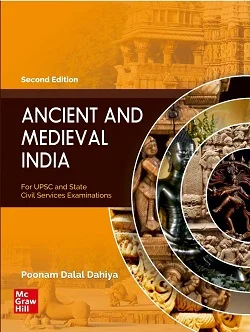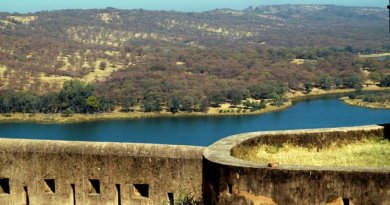Indus valley Civilization
Indus Valley Civilization
Geographical Extension
Largest Ancient Civilization: Covered approximately 1.25 million square kilometers, making it the most extensive of the three early civilizations (Egypt, Mesopotamia, and Indus Valley).
Cardinal Boundaries: Extended from Jammu in the north to the Narmada estuary in the south, and from the Makran coast of Balochistan in the west to Meerut in the northeast.
Specific Limits:
- Western: Sutkagendor in Makran (Balochistan)
- Eastern: Alamgirpur in Western Uttar Pradesh
- Northern: Mandu in Jammu and Kashmir
- Southern: Daimabad in Maharashtra

River Systems: Primarily flourished in the alluvial plains of the Indus River and along the ancient Ghaggar-Hakra river system.
Modern Countries: Covered parts of present-day Pakistan, northwestern India, and parts of Afghanistan.
Total Sites: Over 1,000 sites discovered, with only six classified as major cities.
Three Phases of Indus Valley Civilization
Early Harappan Phase (3300–2600 BCE)
- Ravi Phase: Named after the Ravi River.
- Kot Diji Phase: Representing the phase leading up to Mature Harappan.
Characteristics:
- Gradual movement of farmers from mountains to lowland river valleys.
- Development of trade networks with distant sources of raw materials.
- Domestication of crops including peas, sesame seeds, dates, and cotton.
- Building of large walled settlements and expansion of trade.
Key Sites: Mehrgarh, Rehman Dheri, Amri, Kalibangan.
Mature Harappan Phase (2600–1900 BCE)
- Peak Period: Harappan culture reached its zenith and became the largest civilization in the ancient world.
- Urban Development: Early Harappan communities transformed into large urban centers.
Major Cities: Harappa, Mohenjo-daro, Ganeriwala, Dholavira, Kalibangan, Rakhigarhi.
Standardization:
- Uniform use of baked bricks in 1:2:4 ratio.
- Standardized weights and measures.
- Common pottery styles, ornaments, and stamp seals with Indus script.
Civic Amenities:
- Houses with bathrooms, efficient roads, elaborate drainage and water systems.
Late Harappan Phase (1900–1300 BCE)
- Decline Period: Most mature Harappan cities were abandoned.
- New Settlements: People moved to new sites in Gujarat, Haryana, and western UP.
Cultural Changes:
- Disappearance of distinctive Harappan features.
- Deterioration in house construction techniques.
- Arrival of new groups with distinct burial practices.
Post-Harappan Cultures: Cemetery H Culture, Late Siswal Culture, Ochre Colored Pottery (OCP) Culture.
General Features
- Urban Civilization: First known urban culture of the Indian subcontinent.
- Bronze Age Culture: Mature phase lasted from 2500–1900 BCE.
- Peaceful Society: No evidence of warfare or military structures.
- Standardization: Uniformity in weights, measures, bricks, and urban planning.
- Advanced Technology: Metallurgy, precise measurements, engineering skills.
- Script: Undeciphered pictographic script on thousands of seals and objects.
- No Monumental Architecture: Unlike Egypt and Mesopotamia.
Town Planning
Grid Pattern Layout
- Rectangular grids with streets running north-south and east-west.
- Streets intersected at right angles.
- House doors opened into narrow lanes.
City Division
- Two-Part Structure: Elevated citadel (west) and lower town (east).
- Citadel Features: Administrative buildings, granaries, courtyards.
- Lower Town: Brick houses for common people.
- Fortification: Fortified walls of mud bricks.
Construction Standards
- Bricks with 1:2:4 size ratio.
- Burnt bricks for drainage and construction; mud bricks for houses.
- No stone buildings.
Residential Features
- Multi-story houses with courtyards, wells, ventilated bathrooms, tiled floors.
Advanced Drainage System
- Covered drains alongside streets with gravitational flow.
- Rainwater harvesting systems, especially in Dholavira.
Society
Social Structure
- Egalitarian Society: Limited evidence of social stratification.
- No Clear Hierarchy: Unlike Egypt or Mesopotamia.
- Social Differentiation: Economic, ethnic, or linguistic differences evident.
- Family Structure: Joint family system.
Religious Practices
- Worship of Mother Goddess (terracotta figurines).
- Pashupati Seal: Horned deity in yogic posture.
- Animal worship: Bulls, elephants, unicorns.
- Fire worship: Fire altars at Kalibangan and Lothal.
- Nature worship: Trees and stones.
Cultural Life
- Language: Unknown, pictographic script.
- Leisure: Indoor games, toys, possible stadium at Dholavira.
- Fashion and Jewelry: Beads, gemstones, precious metals; cotton and wool clothing.
- Gender Roles: Women held significant religious and social importance.
Economy and Trade
Economic Foundation
- Agriculture-Based: Fertile alluvial plains supported agriculture.
- Craft Specialization: Bead-making, pottery, metallurgy, seal carving.
- Barter System: No currency, trade through barter.
Internal Trade
- Large granaries at Harappa and Mohenjo-daro.
- Craft centers at Chanhudaro, Balakot (bangles), Lothal (beads).
- Transportation via carts and boats.
External Trade
- Reach: From Central Asia to Arabian Peninsula.
- Partners: Mesopotamia, Iran, Afghanistan, China.
- Maritime Ports: Lothal (dockyard), Dholavira, Sutkagen-dor.
- Evidence: Seals found at Mesopotamian sites and vice versa.
Imports
- Metals: Copper, lead, tin.
- Stones: Lapis lazuli (Afghanistan), semi-precious stones.
- Others: Jade (China), cedar wood (Himalayas), gold, silver.
- Luxury Items: Through maritime and overland routes.
Art and Culture
Sculpture and Figurines
- Priest-King: Steatite statue from Mohenjo-daro.
- Dancing Girl: Bronze, about 11 cm tall.
- Terracotta figurines of women.
Seals
- Over 3,500 seals found.
- Made of steatite, terracotta, ivory, etc.
- Animal motifs, including unicorn, rhinoceros, elephant.
- Used for trade, amulets, identity markers.
Pottery
- Wheel-made, red with black painted designs.
- Designs: Geometric, pipal leaves, intersecting circles.
Metallurgy and Crafts
- Bronze alloys with arsenic, tin, or nickel.
- Precision bead-making with carnelian.
- Standardized crafts across sites.
Agriculture
Primary Crops
- Rabi Crops: Wheat (Harappa, Mohenjo-daro), barley (Shortugai).
- Kharif Crops: Mustard, sesame, cotton (earliest evidence).
- Others: Dates, pulses (green gram, black gram, peas).
- Regional Variations: Rice at Lothal and Rangpur.
Techniques
- Flood-supported farming with summer monsoons.
- Use of canals, wells, river irrigation.
- Domestication of buffalo, cattle, sheep, goats.
Evidence
- Granaries, farming tools, organized field systems.
Decline
Environmental Factors
- Climate change with prolonged drought.
- Drying of Ghaggar-Hakra river.
- River course changes, periodic flooding, earthquakes.
Internal Transformation
- Decline of characteristic features.
- Reduced craft specialization.
- Migration from large cities to smaller settlements.
Theories of Decline
- Gradual cultural transformation.
- Multiple contributing factors (environmental, economic, social).
- Aryan invasion theory largely rejected.
Post-Harappan Civilization
Cemetery H Culture (1900–1300 BCE)
- Located primarily at Harappa.
- Pot burials, distinctive pottery styles.
- Retained some Harappan elements while introducing new ones.
Ochre Colored Pottery Culture (2000–1500 BCE)
- Spread in Indo-Gangetic Plain.
- Bronze Age culture with ochre-colored pottery.
- Cultural connections to Late Harappan and early Vedic elements.
- Evidence: Cart burials, copper artifacts.
Regional Cultures
- Siswal Culture: Haryana.
- Rangpur Culture: Gujarat.
- Swat Culture: Northwestern regions.
- Jhukar Culture: Sindh.
Cultural Continuity and Change
- Some Harappan craft techniques retained.
- New burial practices and pottery styles.
- Transition between Harappan civilization and later Vedic cultures.
Check other notes: Ancient India
Discover more from Simplified UPSC
Subscribe to get the latest posts sent to your email.


